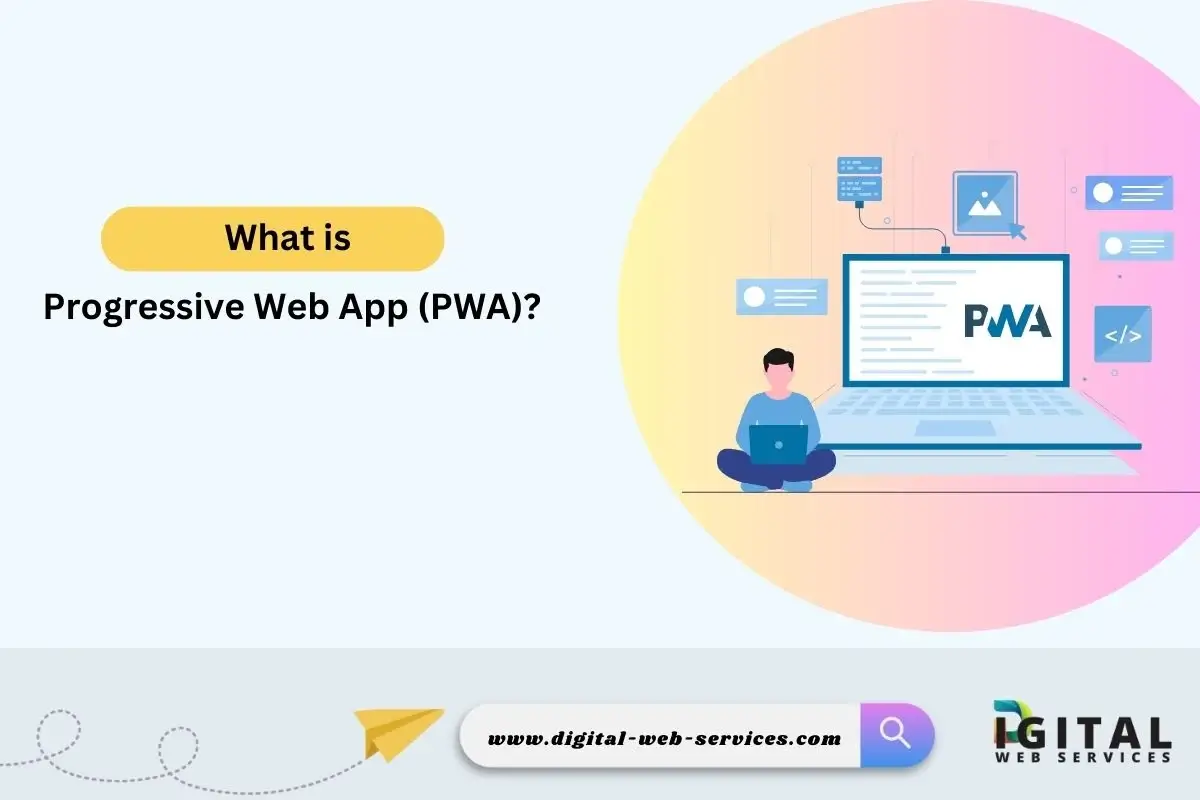
Progressive Web Apps (PWAs) have emerged as a revolutionary approach to delivering seamless, app-like experiences directly through web browsers. But what is a Progressive Web App, and why are businesses and developers increasingly adopting this technology? This comprehensive guide explores the essence of PWAs, their benefits, development strategies, and how they compare to traditional and native applications.
Understanding Progressive Web Apps
What is a Progressive Web App?
A Progressive Web App is a type of Progressive Web Application that leverages modern web capabilities to deliver an app-like experience to users. PWAs combine the best features of both web and mobile applications, offering advantages such as offline access, push notifications, and enhanced performance without the need for installation from app stores.
Key Features of PWAs
- Responsive Design: PWAs are built to work on any device, whether it’s a smartphone, tablet, or desktop.
- Offline Capabilities: Utilizing service workers, PWAs can function offline or in low-network conditions.
- App-like Interface: They provide a seamless, app-like user experience with smooth navigation and interactions.
- Push Notifications: Engage users with timely updates and notifications.
- Secure: Served over HTTPS to ensure data integrity and security.
Benefits of Progressive Web Apps
Advantages Over Traditional Websites and Native Apps
Progressive Web Apps offer several benefits of Progressive Web Apps that make them an attractive option for businesses and developers:
- Improved Performance: PWAs load faster and offer smoother interactions compared to traditional websites.
- Cost-Effective Development: Building a PWA can be more economical than developing separate native apps for different platforms.
- Enhanced SEO: Progressive Web App SEO ensures better visibility in search engine rankings.
- No Installation Required: Users can access PWAs directly from their browsers without the need to download from app stores.
PWA vs. Native Apps
When comparing PWA vs Native Apps, PWAs stand out due to their cross-platform compatibility and lower development costs. While native apps may offer deeper integration with device hardware, PWAs provide sufficient functionality for most use cases, making them a versatile choice for many businesses.
How Do Progressive Web Apps Work?
The Role of Service Workers
At the heart of how Progressive Web Apps work is the service worker. This script runs in the background, enabling features like offline access, background sync, and push notifications. Service workers intercept network requests, cache essential resources, and ensure that the PWA remains functional even without a stable internet connection.
PWA Architecture
Progressive Web App architecture is designed to be modular and scalable. It typically involves:
- Responsive Frontend: Ensures the app looks and functions well on all devices.
- Service Workers: Handle caching, offline functionality, and background processes.
- Web App Manifest: Provides metadata for the app, allowing users to install it on their devices.
- Backend Integration: Connects to APIs and databases to fetch and manage data.
Developing a Progressive Web App
How to Build a Progressive Web App
Building a Progressive Web App involves several steps:
- Design a Responsive Interface: Ensure the app adapts to various screen sizes and devices.
- Implement Service Workers: Use service workers to manage caching and offline capabilities.
- Create a Web App Manifest: Define the app’s metadata, such as name, icons, and theme colors.
- Optimize Performance: Utilize techniques like lazy loading and code splitting to enhance speed.
- Ensure Security: Serve the app over HTTPS to protect data and maintain user trust.
Best Tools for Progressive Web Apps
Developers can leverage a variety of best tools for Progressive Web Apps, including:
- Google Lighthouse: For auditing and improving PWA performance.
- Workbox: A set of libraries for managing service workers.
- Webpack: For bundling and optimizing assets.
- React or Angular: Popular frameworks that support PWA development.
PWA Development Tutorials and Examples
For those looking to get started, numerous PWA development tutorials and Progressive Web App examples are available online. These resources provide step-by-step guidance and real-world scenarios to help developers understand and implement PWAs effectively.
Comparing Progressive Web Apps with Other Technologies
PWA vs. Responsive Web Design
While both Progressive Web Apps vs Responsive Web Design focus on adaptability across devices, PWAs go a step further by offering offline capabilities, push notifications, and app-like interactions, enhancing the overall user experience.
PWA vs. Single Page Application
PWA vs Single Page Application comparisons highlight that while SPAs offer dynamic and interactive user interfaces, PWAs incorporate additional features like offline functionality and better performance optimization, making them more robust for certain applications.
PWA vs. Hybrid Apps
When evaluating PWA vs Hybrid Apps, PWAs are often preferred for their simplicity and direct deployment via web browsers, whereas hybrid apps may require additional layers and app store distribution, potentially increasing complexity and cost.
Use Cases for Progressive Web Apps
Progressive Web Apps for eCommerce
E-commerce platforms benefit significantly from PWAs by providing faster load times, offline browsing, and push notifications for promotions, leading to improved user engagement and higher conversion rates.
Progressive Web Apps in Education
Educational institutions utilize PWAs to deliver interactive learning materials, accessible content offline, and real-time notifications, enhancing the learning experience for students.
Best and Top Progressive Web Apps in 2024
In 2024, numerous best Progressive Web Apps have set benchmarks across various industries. From social media platforms to productivity tools, top Progressive Web Apps in 2024 demonstrate the versatility and effectiveness of PWAs in meeting diverse user needs.
Advanced Topics in Progressive Web Apps
Progressive Web App Caching Strategies
Effective Progressive Web App caching strategies are crucial for ensuring that users have access to content even when offline. Techniques like cache-first, network-first, and stale-while-revalidate help balance performance and data freshness.
Integrating APIs in Progressive Web Apps
Integrating APIs in Progressive Web Apps allows developers to fetch dynamic data, connect with backend services, and enhance functionality, making PWAs more powerful and feature-rich.
Progressive Web App Analytics
Monitoring and analyzing user interactions through Progressive Web App analytics provides valuable insights into user behavior, helping businesses optimize their apps for better performance and engagement.
Regional Perspectives on Progressive Web Apps
Progressive Web Apps Across the Globe
PWAs are gaining traction worldwide, with significant adoption in regions like the USA, Europe, India, Australia, and Canada. Each region leverages PWAs to address unique market needs and technological landscapes, contributing to the global growth of this technology.
Future Trends and Innovations in Progressive Web Apps
Latest Trends in Progressive Web Apps
The latest trends in Progressive Web Apps include advancements in offline capabilities, enhanced security measures, and deeper integration with device hardware, pushing the boundaries of what PWAs can achieve.
The Future of Progressive Web Apps
Looking ahead, the future of Progressive Web Apps promises even greater innovations, such as improved performance optimizations, broader support for emerging technologies, and increased adoption across various industries.
Progressive Web Apps Updates in 2024
In 2024, Progressive Web Apps updates focus on refining existing features, introducing new APIs, and enhancing developer tools to streamline the PWA development process and improve user experiences.
Best Practices for Progressive Web App Design
To ensure the success of a PWA, following best practices for Progressive Web App design is essential. These include:
- Prioritizing Performance: Optimize load times and ensure smooth interactions.
- Ensuring Accessibility: Make the app usable for people with disabilities.
- Maintaining Security: Protect user data with robust security measures.
- Providing Clear Navigation: Design intuitive navigation to enhance user experience.
Conclusion
Progressive Web Apps represent a significant advancement in web and mobile application development, offering a harmonious blend of the accessibility of the web and the functionality of native apps. By understanding what Progressive Web Apps are, their benefits, and how to effectively develop and implement them, businesses and developers can harness the power of PWAs to deliver exceptional user experiences, drive engagement, and stay ahead in the competitive digital landscape.
Whether you’re comparing PWA vs Native Apps, exploring PWA development tutorials, or considering Progressive Web Apps for eCommerce, embracing PWAs can lead to innovative solutions and sustained success in the ever-evolving world of technology.
Maria is a digital marketing expert specializing in SEO, paid marketing, social media, affiliate marketing, and WordPress. She is passionate about driving online growth and works with businesses to optimize their digital strategies for greater success in today’s competitive online market.










